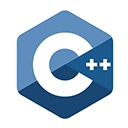Object-Oriented Programming (OOP) is a fundamental programming paradigm that focuses on organizing code into objects, each representing a real-world entity. C++ is a versatile language that fully supports OOP principles. In this guide, we'll explore how to use C++ for Object-Oriented Programming and provide sample code to illustrate these concepts.
Classes and Objects
In C++, classes serve as blueprints for creating objects. Objects are instances of classes and encapsulate data (attributes) and behavior (methods). Let's create a simple class and an object:
#include <iostream>
using namespace std;
// Class definition
class Car {
public:
string brand;
string model;
int year;
void displayInfo() {
cout << "Brand: " << brand << ", Model: " << model << ", Year: " << year << endl;
}
};
int main() {
// Object creation
Car myCar;
myCar.brand = "Toyota";
myCar.model = "Camry";
myCar.year = 2022;
// Call a method on the object
myCar.displayInfo();
return 0;
}
In this example, we define a `Car` class with attributes (`brand`, `model`, and `year`) and a method (`displayInfo`). We then create an object `myCar` and call the `displayInfo` method on it.
Encapsulation and Access Control
C++ supports encapsulation by allowing you to control the access to class members. You can use access specifiers like `public`, `private`, and `protected` to determine the visibility of class members. For example:
class Person {
public:
string name;
private:
int age;
};
int main() {
Person person;
person.name = "Alice"; // Accessible
person.age = 30; // Error: 'age' is private
return 0;
}
In this code, the `name` attribute is public and accessible, while the `age` attribute is private and not accessible outside the class.
Inheritance
Inheritance is a key concept in OOP that allows you to create a new class based on an existing class, inheriting its attributes and behaviors. Here's an example:
// Base class
class Shape {
public:
double area() {
return 0.0;
}
};
// Derived class
class Circle : public Shape {
public:
double radius;
double area() {
return 3.14 * radius * radius;
}
};
int main() {
Circle circle;
circle.radius = 5.0;
// Call the area method from the derived class
cout << "Circle Area: " << circle.area() << endl;
return 0;
}
In this example, we create a `Shape` base class and a `Circle` derived class that inherits from `Shape`. The `Circle` class overrides the `area` method to calculate the area of a circle.
Polymorphism
Polymorphism allows objects of different classes to be treated as objects of a common base class. It enables dynamic binding, where the appropriate method is called based on the actual object type. Here's an example using virtual functions:
// Base class
class Animal {
public:
virtual void speak() {
cout << "Animal speaks" << endl;
}
};
// Derived classes
class Dog : public Animal {
public:
void speak() override {
cout << "Dog barks" << endl;
}
};
class Cat : public Animal {
public:
void speak() override {
cout << "Cat meows" << endl;
}
};
int main() {
Animal* myAnimal;
Dog myDog;
Cat myCat;
myAnimal = &myDog;
myAnimal->speak(); // Calls Dog's speak method
myAnimal = &myCat;
myAnimal->speak(); // Calls Cat's speak method
return 0;
}
In this example, we define a base class `Animal` and two derived classes, `Dog` and `Cat`. Polymorphism is achieved by using virtual functions, allowing us to call the appropriate method based on the actual object type.
Conclusion
C++ is a powerful language for Object-Oriented Programming, offering features like classes, objects, encapsulation, inheritance, and polymorphism. By understanding and using these OOP principles, you can write organized and maintainable code for a wide range of applications.

